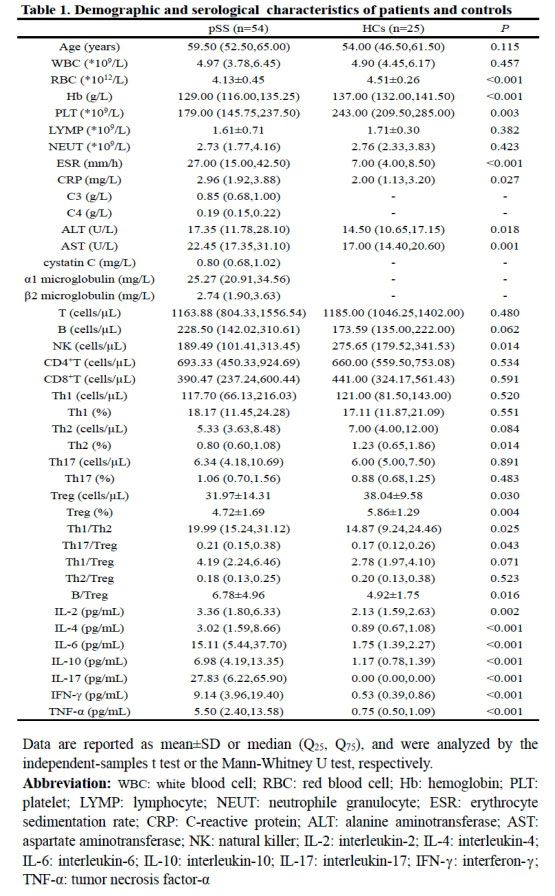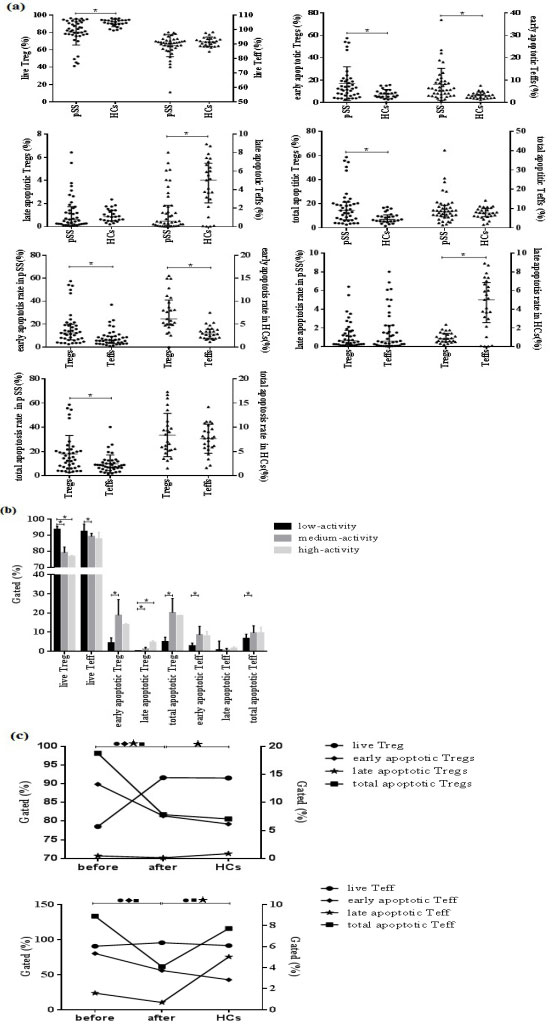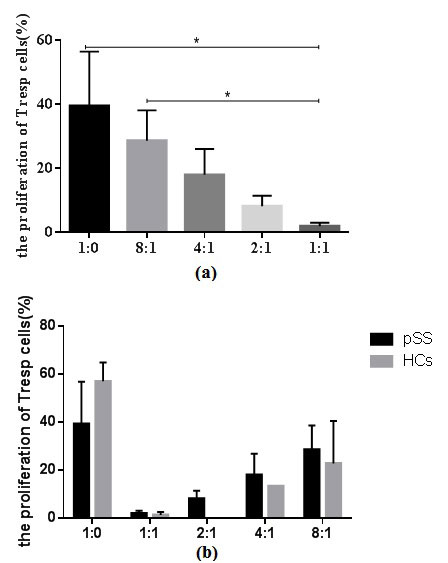Session Information
Session Type: Poster Session (Tuesday)
Session Time: 9:00AM-11:00AM
Background/Purpose: To investigate the apoptosis and suppressive function of regulatory T cells (Tregs) in primary Sjögren’s syndrome (pSS), and the effect of low-dose IL-2 on apoptosis of Tregs.
Methods: Apoptosis of Tregs and effector T (Teff) cells were measured by staining with Annexin V and 7-amino-actinomycin D (7-AAD) in 54 female patients with pSS and 25 aged-matched female healthy controls (HCs) using flow cytometry. The function of Tregs was evaluated by the suppressive capacity to autologous CD4+CD25– responder T (Tresp) cells expansion and was expressed as the proliferation of Tresp cells. The apoptosis degree of 13 pSS after the administration of low-dose IL-2 was also analyzed.
Results: Defect of number (P=0.030) and percentage (P=0.004) of Tregs was observed in pSS. Tregs was more sensitive to apoptosis than Teff cells, and apoptosis degree of Tregs was parallel to disease activity. Functional assay showed a compromised suppression for Tresp proliferation. The administration of low-dose IL-2 reduced the apoptitic rate of Tregs and Teff cells. Furthermore, serum concentrations of interleukin-6 (IL-6), IL-10, IL-17, interferon-γ (IFN-γ) and tumor necrosis factor-α (TNF-α) were positively associated with early apoptotic Tregs and Teff cells, but with late apoptotic Teff cells negatively. In addition, Cystatin C, α1 microglobulin and β2 microglobulin could contribute to the early apoptosis of Tregs (r=0.553, P=0.001; r=0.537, P=0.004; r=0.552, P=0.001) and Teff cells (r=0.534, P=0.001; r=0.560, P=0.002; r=0.401, P=0.019).
Conclusion: Aberrant increased apoptosis and impaired function of Tregs may partially contribute to the immune imbalance, leading to the onset of pSS. And multiple up-regulated cytokines, cystatin C, α1 microglobulin and β2 microglobulin were responsible for the increased sensitivity to apoptosis of Tregs. Low-dose IL-2 could decrease the sensitivity to apoptosis of Tregs and alleviate disease activity.
To cite this abstract in AMA style:
Feng M, Zhao X, Luo J. Increased Apoptosis and Compromised Suppressive Capacity of Regulatory T Cells in Primary Sjögren’s Syndrome [abstract]. Arthritis Rheumatol. 2019; 71 (suppl 10). https://acrabstracts.org/abstract/increased-apoptosis-and-compromised-suppressive-capacity-of-regulatory-t-cells-in-primary-sjogrens-syndrome/. Accessed .« Back to 2019 ACR/ARP Annual Meeting
ACR Meeting Abstracts - https://acrabstracts.org/abstract/increased-apoptosis-and-compromised-suppressive-capacity-of-regulatory-t-cells-in-primary-sjogrens-syndrome/



